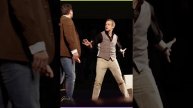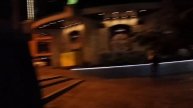WHEN RUSSIA WAS BLACK BUT STILL IN DENIAL
Copyright Disclaimer under Section 107 of the copyright act 1976, allowance is made for fair use for purposes such as criticism, comment, news reporting, scholarship, and research. Fair use is a use permitted by copyright statute that might otherwise be infringing.
Timetowakethehellup@gmail.com
The Pushkin State Museum of Fine Arts (Russian: Музей изобразительных искусств имени А. С. Пушкина, abbreviated as Russian: ГМИИ) is the largest museum of European art in Moscow, located in Volkhonka street, just opposite the Cathedral of Christ the Saviour. The International musical festival Sviatoslav Richter's December nights has been held in the Pushkin Museum since 1981.
The building of the Pushkin State Museum of Fine Arts was designed by Roman Klein and Vladimir Shukhov. Construction lasted from 1898 until early 1912, with Ivan Rerberg heading structural engineering effort on the museum site for the first 12 years.
In 2008, President Dmitri A. Medvedev announced plans for a $177 million restoration. A 22 billion rubles ($670 million) expansion, developed by Norman Foster in collaboration with local architectural firm Mosproject-5, was confirmed in 2009, but became mired in disputes with officials and preservationists and concern grew that it would not be completed on schedule for 2018. After Moscow's chief architect Sergei Kuznetsov issued an ultimatum, demanding that Foster take a more active role in the project and prove his commitment by coming to the Russian capital within a month, Norman Foster's firm resigned from the project in 2013.
In 2014, Russian architect Yuri Grigoryan, and his firm Project Meganom, were chosen to take over the project. Grigoryan's design provides new modern buildings and, following the protest of heritage groups who campaigned to save the pre-revolutionary architecture, preserves the historic 1930s gas station near the Pushkin's main building inside a glass structure.
Egypt
Most of the objects presented in Hall No. 1 have been on display since the museum opening in 1912 and come from the collection of Vladimir Golenishchev (1856-1947). It is one of the world's best private collections of Ancient Egyptian art, acquired by the museum in 1909. This collection of around 8,000 objects was the first significant collection of original pieces of the Fine Arts Museum.
In 1913, the museum acquired a collection of items, including a plate with a scene of mourning known as Mourners. A few precious gifts were made by Yury Nechaev-Maltsov (1834-1913): beautiful Fayum mummy portraits, a golden diadem, and a bronze statue of walking Harpocrates. After the Great October Socialist Revolution, the museum's Egyptian collection acquired exhibits from other museums and private collections. Moreover, scientists whose work was inextricably linked to the museum, such as Boris Farmakovsky (1870-1928), Tamara Borozdina-Kozmina (1883-1958), and Alexander Zhivago (1860-1940), gave their artifacts to the Department of the Ancient East. The museum's collection was significantly enriched after the acquisition of the collection of painter and art historian Nikolay Prakhov (1873-1957) in 1940. The collection included 217 pieces and previously belonged to Prakhov's father, famous Russian art historian, philologist, archaeologist, and critic Adrian Prakhov (1846-1916). Adrian Prakhov went to Egypt many times to study ancient artifacts. Later, the holdings of the Department of the Ancient East were enhanced through gifts, archaeological excavations, and regular acquisitions.
Видео WHEN RUSSIA WAS BLACK BUT STILL IN DENIAL автора Свет музея
Видео WHEN RUSSIA WAS BLACK BUT STILL IN DENIAL автора Свет музея
Информация
25 октября 2024 г. 3:40:27
00:01:27
Похожие видео
 НОВОСТИ ПРИКАМЬЯ 28.08.17 15-30
НОВОСТИ ПРИКАМЬЯ 28.08.17 15-30 история
история 2016-05-19 г. Брест. Выставка «Исторические планы города начала ХIХ века». Новости на Буг-ТВ.
2016-05-19 г. Брест. Выставка «Исторические планы города начала ХIХ века». Новости на Буг-ТВ. Гостеприимные хозяева славного города Дербента
Гостеприимные хозяева славного города Дербента фб
фб Экспериментариум - «Утро с Вами» 12.04.2017
Экспериментариум - «Утро с Вами» 12.04.2017 "Наши жёны "...
"Наши жёны "... С Днём космонавтики!
С Днём космонавтики! 🔥Наби Набиев с новыми братьям-бойцами в Корее.
🔥Наби Набиев с новыми братьям-бойцами в Корее. Гора Михаила - горнолыжный курорт
Гора Михаила - горнолыжный курорт 1000127829.mp4
1000127829.mp4 Гуляем и ищем где вкусно покушать (БР-100 в Р-н-Д) ч.4
Гуляем и ищем где вкусно покушать (БР-100 в Р-н-Д) ч.4 Тайланд.Паттайя. Куда пойти с детьми? Музей мишек.泰迪熊博物馆 .Teddy Bear Museum. Терминал 21.
Тайланд.Паттайя. Куда пойти с детьми? Музей мишек.泰迪熊博物馆 .Teddy Bear Museum. Терминал 21. 4.05.25./просто воскресенье.
4.05.25./просто воскресенье. КОЛОРАДСКИЙ ЖУК 54 КГ
КОЛОРАДСКИЙ ЖУК 54 КГ Гранд макет Россия ночь
Гранд макет Россия ночь Музей Кашинской старины Экскурсия 9
Музей Кашинской старины Экскурсия 9 HappyChildren&Success Episode №2
HappyChildren&Success Episode №2 VID_20250422_194829.mp4
VID_20250422_194829.mp4 Апрель 2025
Апрель 2025
